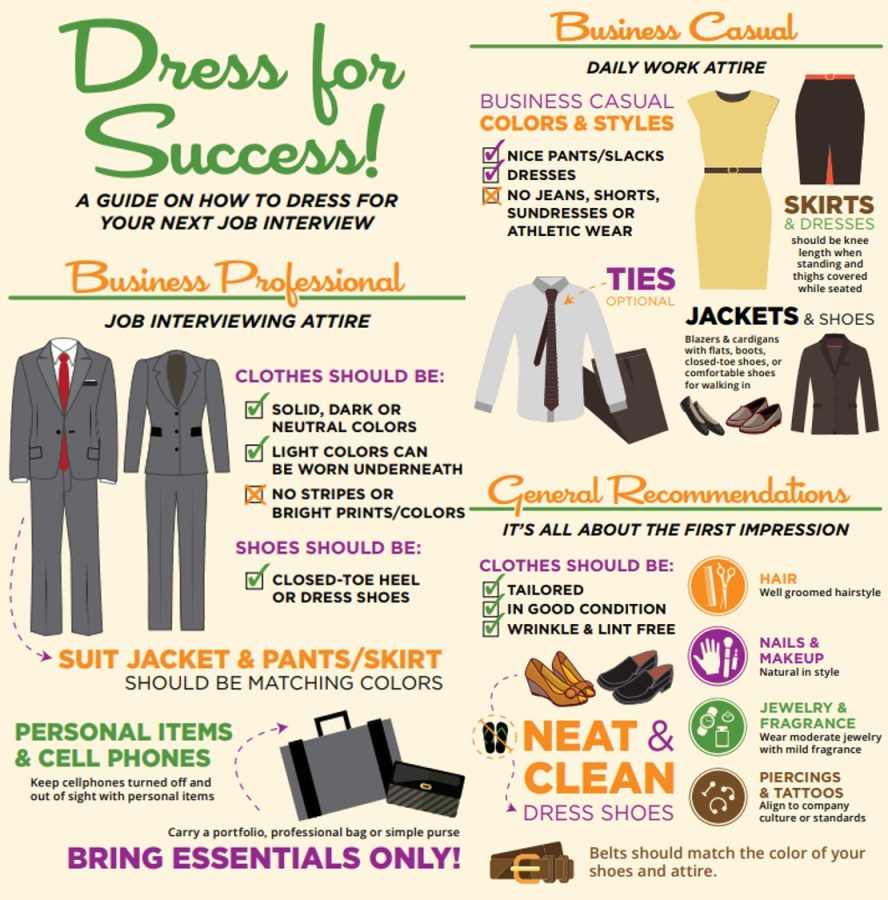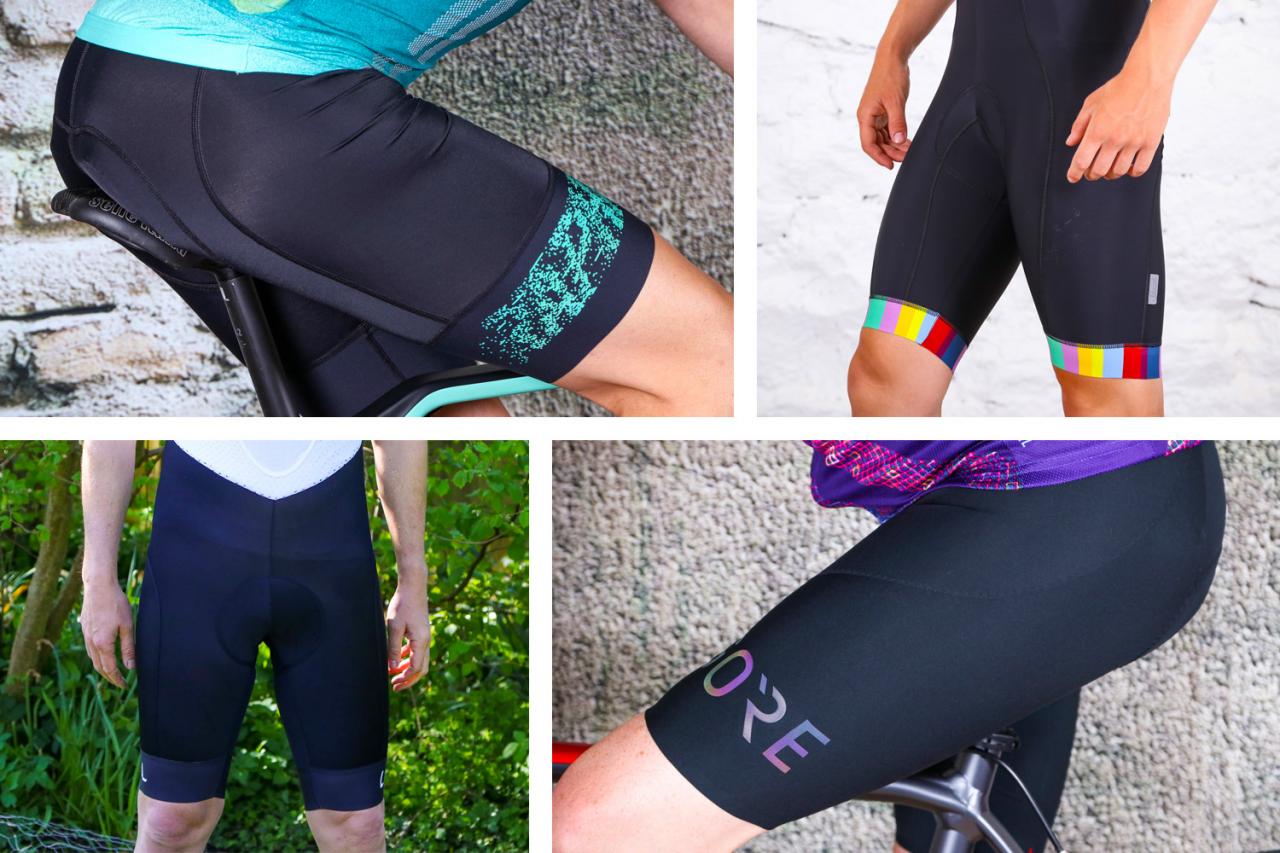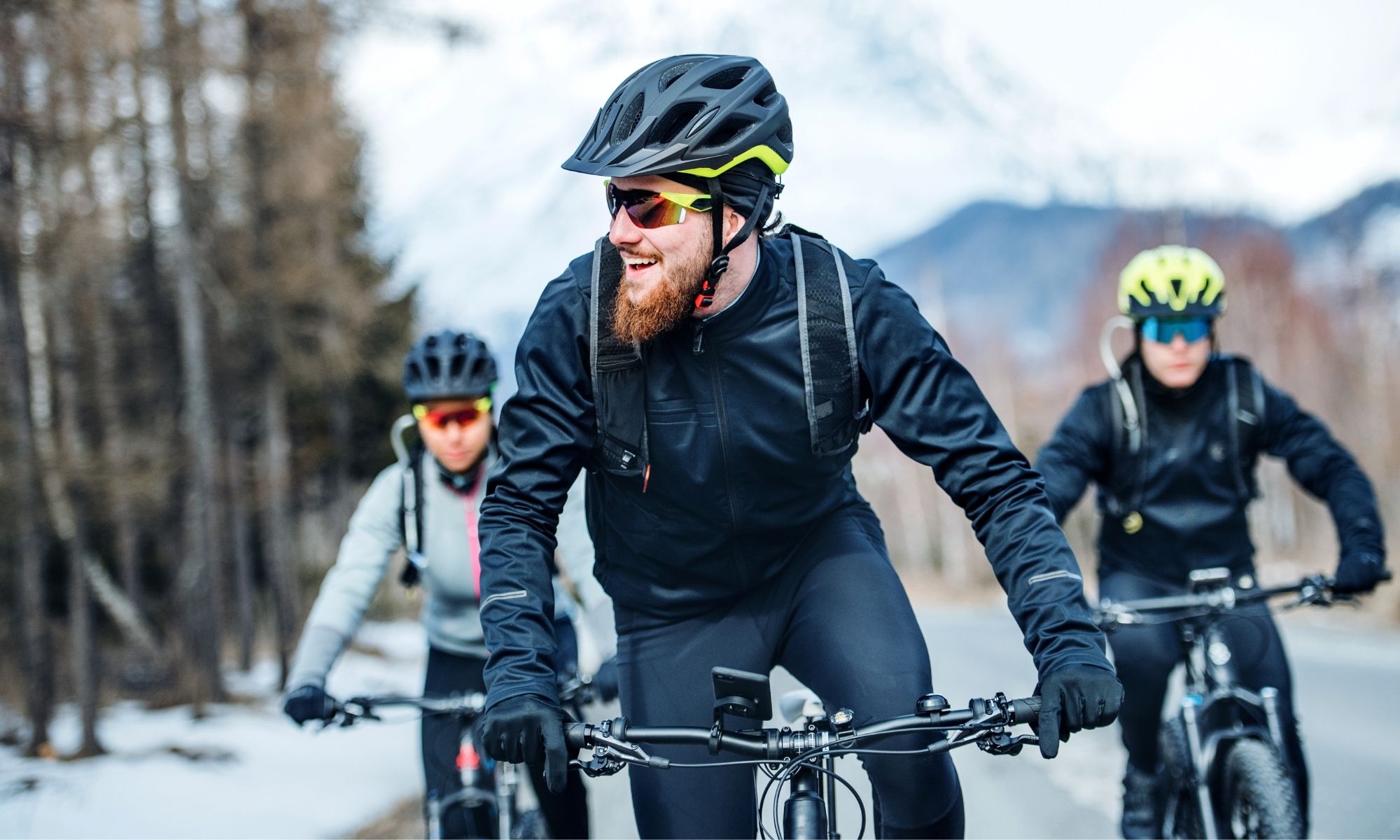Dressing for Success: Why Proper Attire Matters
When it comes to biking, what to wear is just as important as the bike itself. Wearing the right gear can make all the difference in comfort, safety, and performance. A well-dressed cyclist can enjoy a more enjoyable ride, while a poorly dressed one may struggle with discomfort, restricted movement, and even safety hazards.
Proper attire can enhance the overall biking experience by providing comfort, support, and protection. For instance, a good pair of cycling shorts can reduce discomfort and chafing, while a breathable jersey can keep you cool and dry in warm weather. A properly fitted helmet can protect your head from injury, and a pair of gloves can improve grip and control. By wearing the right gear, you can focus on the ride, rather than being distracted by discomfort or safety concerns.
Moreover, wearing the right attire can also improve performance. A well-fitted jersey and shorts can reduce wind resistance and improve aerodynamics, while a pair of clipless shoes and pedals can increase efficiency and power. By dressing for success, you can ride faster, longer, and more efficiently, making the most of your biking experience.
When considering what to wear for biking, it’s essential to think about the type of ride you’ll be doing, the weather conditions, and your personal preferences. For example, a road bike ride may require a more aerodynamic jersey and shorts, while a mountain bike ride may require more protective gear, such as knee pads and a full-face helmet.
Ultimately, the key to a successful biking experience is to wear gear that makes you feel comfortable, confident, and prepared for the ride ahead. By choosing the right attire, you can enjoy a more enjoyable, safe, and successful biking experience.
How to Choose the Perfect Cycling Jersey
When it comes to biking what to wear, a cycling jersey is a crucial component of a comfortable and safe ride. A good jersey can provide breathability, visibility, and protection from the elements. But with so many options available, how do you choose the perfect one for your needs?
First and foremost, consider the fit. A jersey that fits well will provide a full range of motion and won’t chafe or rub against your skin. Look for a jersey with a slim fit and a tailored design that won’t flap in the wind. Popular brands like Pearl Izumi and Castelli offer a range of fits and styles to suit different body types and riding styles.
Next, think about the fabric. A breathable jersey will help keep you cool and dry in warm weather, while a water-resistant jersey will protect you from the elements in wet conditions. Look for jerseys made from moisture-wicking fabrics like polyester or nylon, and consider a jersey with a DWR (durable water repellent) finish for added protection.
Visibility is also an important consideration when choosing a cycling jersey. Look for a jersey with bright colors or reflective strips to increase your visibility to other road users. This is especially important when riding in low light conditions or at night.
Finally, consider the features you need. Do you want a jersey with pockets for storing snacks or a phone? Do you need a jersey with a built-in base layer for colder weather? Look for a jersey that meets your specific needs and riding style.
Some popular features to look for in a cycling jersey include:
- Moisture-wicking fabric to keep you cool and dry
- Water-resistant treatment to protect against the elements
- Bright colors or reflective strips for increased visibility
- Pockets for storing snacks or a phone
- A built-in base layer for colder weather
By considering these factors and features, you can choose the perfect cycling jersey for your needs and enjoy a more comfortable and safe ride.
Padded Shorts and Gloves: The Unsung Heroes of Cycling Comfort
When it comes to biking what to wear, padded shorts and gloves are often overlooked but are essential components of a comfortable and safe ride. These unsung heroes of cycling comfort can make a significant difference in reducing discomfort and improving grip, allowing you to focus on the ride rather than distractions.
Padded shorts are designed to provide cushioning and support in the saddle area, reducing pressure points and discomfort. They typically feature a chamois pad, which is a layer of foam or gel that provides extra cushioning and support. Look for shorts with a high-quality chamois pad that is breathable and moisture-wicking, such as those made from synthetic materials like polyester or nylon.
There are different types of padding available, including gel, foam, and fleece. Gel padding is a popular choice for its ability to provide extra cushioning and support, while foam padding is often used for its breathability and moisture-wicking properties. Fleece padding is a good option for colder weather, as it provides warmth and insulation.
Gloves are another essential component of cycling comfort, providing grip, support, and protection for your hands. Look for gloves with padded palms, which can help reduce pressure points and discomfort. Some gloves also feature gel or foam padding on the fingers and thumbs, providing extra cushioning and support.
When choosing padded shorts and gloves, consider the type of riding you’ll be doing and the weather conditions. For example, if you’ll be riding in warm weather, look for shorts and gloves with breathable and moisture-wicking materials. If you’ll be riding in cold weather, look for shorts and gloves with insulating materials like fleece or synthetic insulation.
Some popular brands for padded shorts and gloves include Pearl Izumi, Castelli, and Specialized. These brands offer a range of options to suit different riding styles and weather conditions, so be sure to check them out when shopping for your next pair of padded shorts and gloves.
By investing in a good pair of padded shorts and gloves, you can enjoy a more comfortable and safe ride, and focus on the things that matter most – the scenery, the thrill of the ride, and the sense of accomplishment when you reach your destination.
Protect Your Head: The Importance of a Properly Fitted Helmet
When it comes to biking what to wear, a helmet is the most critical piece of safety gear. A properly fitted helmet can protect your head from serious injury in the event of a crash or fall. In fact, according to the National Highway Traffic Safety Administration (NHTSA), wearing a helmet can reduce the risk of head injury by up to 70%.
Choosing the right helmet can be overwhelming, with so many options available. However, there are a few key things to look for when selecting a helmet. First, make sure the helmet fits properly. A helmet that is too small or too large can be uncomfortable and may not provide adequate protection. Look for a helmet with adjustable straps and a dial-fit system to ensure a secure and comfortable fit.
Next, consider the type of riding you’ll be doing. If you’ll be riding on paved roads, a road bike helmet with a sleek and aerodynamic design may be the best choice. If you’ll be riding on trails or in rugged terrain, a mountain bike helmet with a more robust design and additional features such as a visor and goggle clips may be a better option.
Some popular helmet brands include Bell, Giro, and Specialized. These brands offer a range of helmets to suit different riding styles and preferences, so be sure to check them out when shopping for your next helmet.
In addition to choosing the right helmet, it’s also important to wear it correctly. Make sure the helmet is level on your head, with the straps forming a “V” shape under your ears. The helmet should also be snug but not too tight, with the chin strap securely fastened.
By wearing a properly fitted helmet, you can enjoy a safer and more confident ride. Remember, a helmet is not just a piece of safety gear – it’s a critical component of your overall biking what to wear.
When shopping for a helmet, look for the following features:
- Proper fit: A helmet that fits snugly but not too tightly
- Adjustable straps: A helmet with adjustable straps to ensure a secure fit
- Dial-fit system: A helmet with a dial-fit system for easy adjustments
- Visor and goggle clips: A helmet with a visor and goggle clips for added protection and convenience
- Certification: A helmet that meets safety standards such as CPSC or Snell certification
By considering these features and choosing a helmet that meets your needs, you can enjoy a safer and more confident ride.
Footwear and Pedals: Finding the Perfect Combination
When it comes to biking what to wear, footwear and pedals are often overlooked but are crucial components of a comfortable and efficient ride. The right combination of shoes and pedals can make a significant difference in your overall biking experience, providing improved performance, comfort, and safety.
Clipless shoes and pedals are a popular choice among cyclists, offering a secure and efficient connection between the shoe and pedal. This type of system allows for a more efficient transfer of power from the rider to the bike, resulting in improved performance and reduced fatigue. Additionally, clipless shoes and pedals provide a secure connection, reducing the risk of slipping off the pedals and improving overall safety.
When choosing footwear and pedals, consider the type of riding you’ll be doing and the terrain you’ll be riding on. For example, if you’ll be riding on paved roads, a road bike shoe with a stiff sole and a clipless pedal system may be the best choice. If you’ll be riding on trails or in rugged terrain, a mountain bike shoe with a more flexible sole and a platform pedal system may be a better option.
Some popular brands for footwear and pedals include Shimano, Specialized, and Crank Brothers. These brands offer a range of options to suit different riding styles and preferences, so be sure to check them out when shopping for your next pair of shoes and pedals.
When selecting footwear and pedals, look for the following features:
- Comfort: A shoe that fits comfortably and provides adequate support and cushioning
- Performance: A pedal system that provides efficient power transfer and a secure connection
- Safety: A shoe and pedal system that provides a secure connection and reduces the risk of slipping off the pedals
- Durability: A shoe and pedal system that is built to last and can withstand the demands of regular riding
By choosing the right footwear and pedals, you can enjoy a more comfortable, efficient, and safe ride. Remember, the right gear can make all the difference in your overall biking experience.
In addition to choosing the right footwear and pedals, it’s also important to consider the type of cleats and pedals you’ll be using. Cleats are the small metal or plastic pieces that attach to the bottom of your shoes and connect to the pedals. There are several types of cleats available, including SPD, SPD-SL, and Look. Make sure to choose a cleat that is compatible with your pedals and provides a secure connection.
Layering for Success: How to Dress for Changing Weather Conditions
When it comes to biking what to wear, layering is key to staying comfortable and safe in changing weather conditions. Whether you’re riding in the scorching heat of summer or the chilly cold of winter, layering your clothing can help you regulate your body temperature and stay comfortable.
The first layer, also known as the base layer, should be a breathable and moisture-wicking fabric that helps to keep you cool and dry. Popular choices for base layers include merino wool, polyester, and nylon. Look for a base layer that fits snugly and provides a full range of motion.
The second layer, also known as the mid-layer, should provide insulation and warmth. Popular choices for mid-layers include fleece, wool, and synthetic insulation. Look for a mid-layer that provides a good balance of warmth and breathability.
The third layer, also known as the outer layer, should provide protection from the elements. Popular choices for outer layers include waterproof and breathable fabrics such as Gore-Tex or similar technology. Look for an outer layer that provides a good balance of protection and breathability.
When layering for biking, it’s also important to consider the type of ride you’ll be doing and the terrain you’ll be riding on. For example, if you’ll be riding in hot weather, you may want to wear a lightweight and breathable base layer and a pair of shorts. If you’ll be riding in cold weather, you may want to wear a thermal base layer and a pair of tights.
Some popular brands for layering clothing include Pearl Izumi, Castelli, and Specialized. These brands offer a range of options to suit different riding styles and preferences, so be sure to check them out when shopping for your next layering system.
When choosing layering clothing, look for the following features:
- Breathability: A fabric that allows for airflow and moisture transfer
- Moisture-wicking: A fabric that helps to keep you dry and comfortable
- Insulation: A fabric that provides warmth and protection from the elements
- Waterproofing: A fabric that provides protection from rain and wind
- Visibility: A fabric that provides visibility and reflectivity for increased safety
By layering your clothing correctly, you can stay comfortable and safe in changing weather conditions. Remember, the key to successful layering is to find a balance between warmth, breathability, and protection.
Accessories and Extras: Adding a Touch of Personality to Your Ride
When it comes to biking what to wear, accessories and extras can add a touch of personality to your ride. From water bottles to pumps, lights, and more, there are many ways to enhance your biking experience and make it more enjoyable.
One of the most essential accessories for biking is a water bottle. Staying hydrated is crucial, especially on long rides, and a water bottle can ensure that you have access to water whenever you need it. Look for a water bottle that is BPA-free and has a secure attachment system to prevent it from falling off your bike.
Another important accessory is a pump. A pump can help you maintain the optimal tire pressure, which is essential for a smooth and safe ride. Look for a pump that is compact and lightweight, and has a pressure gauge to ensure accurate readings.
Lights are also a must-have accessory for biking, especially if you plan to ride in low-light conditions. Look for lights that are bright, durable, and have a long battery life. Some popular options include LED lights, which are energy-efficient and provide excellent visibility.
In addition to these essentials, there are many other accessories and extras that can enhance your biking experience. For example, you can add a bike computer to track your speed, distance, and other metrics. You can also add a bike lock to secure your bike when you’re not riding it.
Some popular brands for biking accessories include Specialized, Trek, and Shimano. These brands offer a wide range of accessories and extras that can help you customize your bike and enhance your riding experience.
When choosing accessories and extras, consider the following factors:
- Functionality: Does the accessory serve a practical purpose, such as providing hydration or illumination?
- Quality: Is the accessory well-made and durable?
- Style: Does the accessory match your personal style and preferences?
- Compatibility: Is the accessory compatible with your bike and other gear?
By adding accessories and extras to your bike, you can enhance your biking experience and make it more enjoyable. Whether you’re looking for functionality, style, or a combination of both, there are many options available to suit your needs.
Putting it All Together: Creating a Comprehensive Cycling Wardrobe
When it comes to biking what to wear, creating a comprehensive cycling wardrobe is essential for a comfortable, safe, and stylish ride. By combining the right gear, accessories, and clothing, you can enhance your overall biking experience and enjoy the many benefits of cycling.
In this article, we’ve discussed the importance of proper attire for biking, including the benefits of comfort, safety, and performance. We’ve also provided tips on selecting the perfect cycling jersey, padded shorts and gloves, helmet, footwear and pedals, and layering clothing for different weather conditions.
Additionally, we’ve explored the various accessories available for biking, including water bottles, pumps, and lights. These extras can add a touch of personality to your ride and enhance your overall biking experience.
So, how do you put it all together? Here are some key takeaways to keep in mind when building your comprehensive cycling wardrobe:
- Start with the basics: Invest in a good quality cycling jersey, padded shorts and gloves, helmet, and footwear and pedals.
- Layer it up: Learn how to layer clothing for different weather conditions, including breathable base layers, insulating mid-layers, and waterproof outer layers.
- Accessories matter: Add a touch of personality to your ride with accessories like water bottles, pumps, and lights.
- Consider your riding style: Choose gear and clothing that suits your riding style, whether you’re a road cyclist, mountain biker, or commuter.
- Don’t forget about safety: Always wear a helmet and consider additional safety gear like knee pads and elbow pads.
By following these tips and creating a comprehensive cycling wardrobe, you can enjoy a more comfortable, safe, and stylish ride. Remember, the right gear and clothing can make all the difference in your biking experience.
So, what are you waiting for? Start building your comprehensive cycling wardrobe today and get ready to ride in style and safety!








